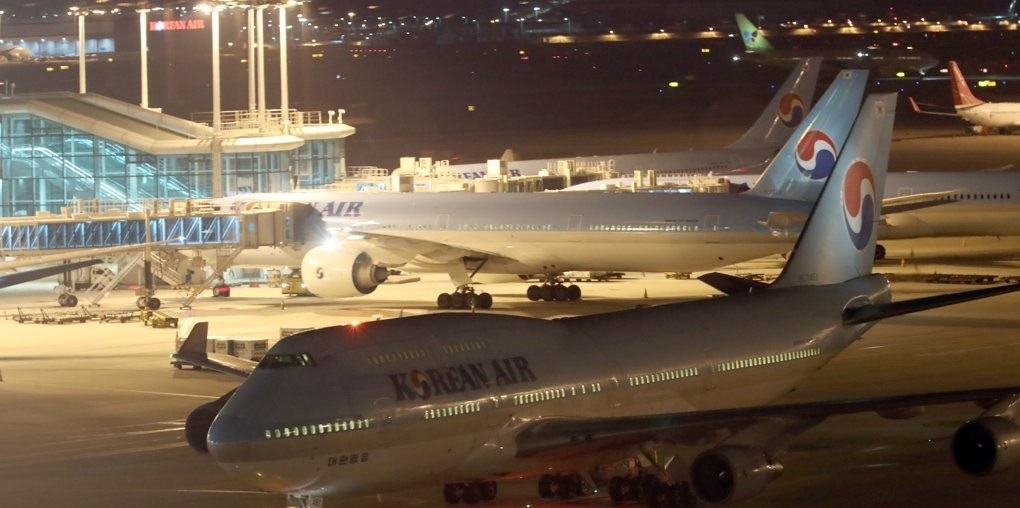S. Korea's first evacuation plane heads to China's Wuhan
By YonhapPublished : Jan. 30, 2020 - 21:24

A South Korean plane departed for China's coronavirus-hit city of Wuhan on Thursday to bring home hundreds of people unable to leave due to a citywide lockdown caused by the deadly contagious virus.
The chartered Korean Air flight left Seoul's Incheon International Airport shortly after 8:45 p.m.
It was expected to return home early Friday with some 360 South Korean citizens.
The flight is one of two originally planned under Seoul's evacuation plan to bring home some 700 South Koreans from the central Chinese city and its neighboring areas.
Its departure also came after hours of delay caused by slower-than-expected approval from Chinese authorities.
"We believe that they (the Chinese) are working in a way in which they give the go-ahead for one plane and then receive requests sequentially, since it has been receiving many other requests from the US and Japan for provisional flights," Foreign Minister Kang Kyung-wha said earlier.
Seoul officials did not give details of the reason for the delay, but observers said that Beijing might want to avoid the image of foreigners escaping China in an unsettling exodus.
Sources say that the Chinese government refused to allow two Japanese planes to fly to Wuhan in one day and also turned down US flight schedules multiple times before finally approving them.
The government also plans to continue talks with Beijing over ways to take care of South Koreans remaining in Wuhan, mostly because they have family members there who hold Chinese citizenship. China said earlier it won't allow its own citizens to join the evacuation.
Seoul hopes to send at least one more flight to China on Friday, according to officials here.
"Whether they are abroad or in Korea, wherever they are, the state's basic mission is to protect the safety and lives of our citizens," Seoul's Vice Foreign Minister Lee Tae-ho told reporters at the Incheon airport.
With a reduction in the number of evaluation flights, at least for now, more people may now have to board the plane home, Lee noted, adding that additional protective steps will be taken to prevent any in-flight infections.
"They are basically showing no signs of being ill. So we have strengthened protective measures so as to bring them all together on the plane," Lee said.
He said consultations with China are still under way to ensure that the remaining citizens can return home as early as possible.
Seoul announced the plan to airlift its nationals out of Wuhan on Tuesday, shortly after Beijing sealed off the city, suspending flights and other forms of transportation there, as well as for the surrounding regions, amid the rapid spread of the disease.
Seoul has been going all out to stem the spread of the pneumonia-like illness that has killed 170 and infected over 7,700 in China alone.
South Korea has reported six confirmed cases of the virus infection since early last week, with no fatalities so far. Health authorities are tracking 2,991 individuals who flew from Wuhan between Jan. 14 and 23, considering the disease's 14-day incubation period.
The government said the evacuated people will be put into isolation at two different public facilities in Asan, South Chungcheong Province, and Jincheon, North Chungcheong Province, in the country's central region.
But the quarantine plan has drawn strong opposition from the residents in the areas worried about potential infection. Some residents in Asan staged sit-in protests, blaming the government for making the decision without their consent.
Scuffles broke out late Wednesday as some angry residents in Jincheon threw water bottles and paper cups at government officials, including Vice Health Minister Kim Gang-lip, who had come to brief them on the plan and to ask for their understanding.
Of about 700 people who have applied for the transfer, those with no symptoms will be transported first, and they will be subject to a quarantine check right before and after the flights, and will stay at the facilities for at least 14 days, according to the government. (Yonhap)




















